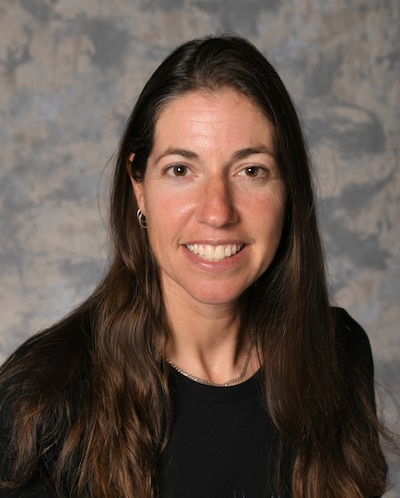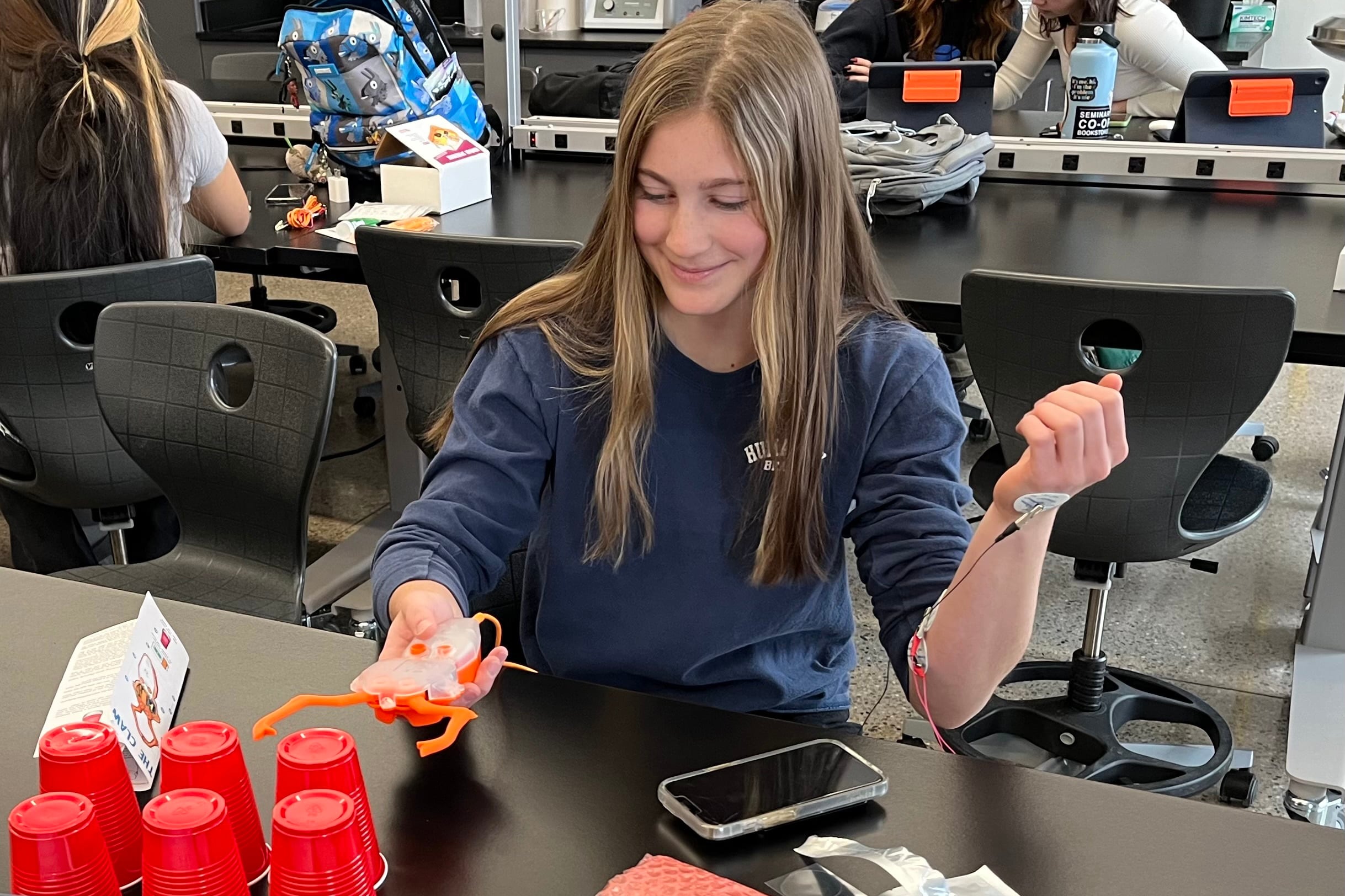Sign up for Chalkbeat Colorado’s free daily newsletter to get the latest reporting from us, plus curated news from other Colorado outlets, delivered to your inbox.
Before Jayme Margolin-Sneider became a teacher, she studied volcanoes. At one point, she worked as an interpretive ranger at Mt. Rainier National Park in Washington state.
“I lived on the volcano, and I taught others about the volcano,” she said of the famous peak.
Today, Margolin-Sneider combines her love of science and teaching as a program manager at the Innovation Center in the St. Vrain Valley school district in northern Colorado. High schoolers from around the district take classes in STEM and other subjects, earn industry certifications, and secure paid work experience through the center.

“I’m so lucky,” said Margolin-Sneider, who teaches one-third time. “I have amazing students here, I always push them to push the limits — like, ‘What else do you want to do? What do you want to try?’ Because that’s what science is all about.”
Margolin-Sneider recently spent six weeks in Vietnam as a Fulbright Teacher Exchange Fellow, working with high school students at a school for gifted students in the city of Bảo Lộc. She talked with Chalkbeat about the similarities between her Vietnamese and American students, why children and teens need hands-on lessons, not just theory, and how a prosthetic “claw” figures into her neuroscience class.
This interview has been edited for length and clarity.
Was there a moment when you decided to become a teacher?
I was always fascinated by natural disasters — the amount of power generated in such a short amount of time just fascinated me. Yet I loved teaching and sharing knowledge as well. I am lucky that I was able to combine these two passions. I worked doing seismic volcanology and then education and outreach.
Before grad school in geochemistry, I actually had another Fulbright scholarship for research in Japan. I did a lot with the local communities there — it was the idea of teaching people how you live with the volcano in your backyard. We would take kindergarten students in these Japanese schools up onto the volcano, and I realized I liked that. I went to grad school in New Mexico and there was a teaching shortage there. I started subbing and got my teaching license.
How did your own experience in school influence your approach to teaching?
In high school, I was part of an environmental club in which we were outdoor education counselors for fifth and sixth graders. We would spend three days and two nights exploring nature at a local park. I love constantly questioning things around me. I was lucky enough to meet many experts in various scientific fields and ask them about their research. I love being able to break down scientific information for younger audiences and share that love of always being curious and then making sense of the science.
Tell us about a favorite lesson to teach.
One example for younger students would be the human seismic wave. Students act out P-waves and S-waves and are able to understand the different wave dynamics. For P-waves, they gently knock into one another, and they can’t move until they feel a force — you know, Newton’s laws of physics — so they kind of feel that gentle sway and the pushback.
I currently teach a neuroscience class where juniors and seniors look at MRIs and CT scans to learn about the human nervous system. Then they hook up electrodes to their hand and work to control a prototype of a prosthetic hand called “the claw” using their own muscles. They have to do different tasks, like stack cups. It’s an introduction to the idea of neuroprosthetics.
How did your experience as a Fulbright Teacher Exchange Fellow in Vietnam impact your outlook and approach to teaching?
My experience showed me how hands-on learning can really energize students. Most students in Vietnam learn the theory from textbooks but do not have a chance to understand the application through hands-on STEM labs. There’s a lot of emphasis on exams.
I was able to run several labs and work with local farmers, as well as tea and coffee manufacturers, to take students on field trips and speak with industry professionals. I could see the excitement in the students and their passion to learn more. Some of the Vietnamese students that I worked with will soon be collaborating with my American students on a water quality project that relates to species sustainability.
What similarities do your American and Vietnamese students share? What are the differences?
Both American and Vietnamese students are full of energy, excited about the future, and love socializing. In Vietnam, many students go to extra classes after school. In America, many students have sports or school clubs and may stay at school late into the evening. In Vietnam, most students would return home throughout the day, and there are no school buses.
What are you reading for enjoyment?
Recently, I read an article about Yellowstone National Park that I was talking about with my students. I also read a lot of articles about different space missions. I just kind of keep up on space news and earth news.
Ann Schimke is a senior reporter at Chalkbeat, covering early childhood issues and early literacy. Contact Ann at aschimke@chalkbeat.org.







